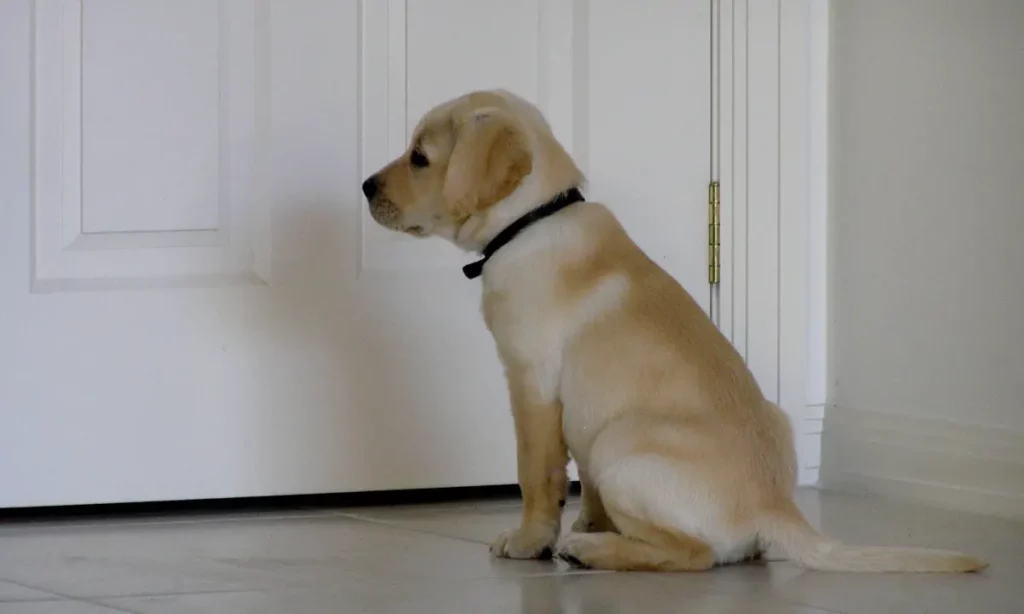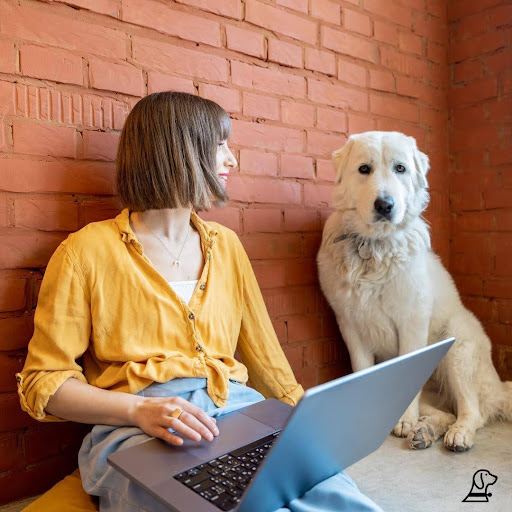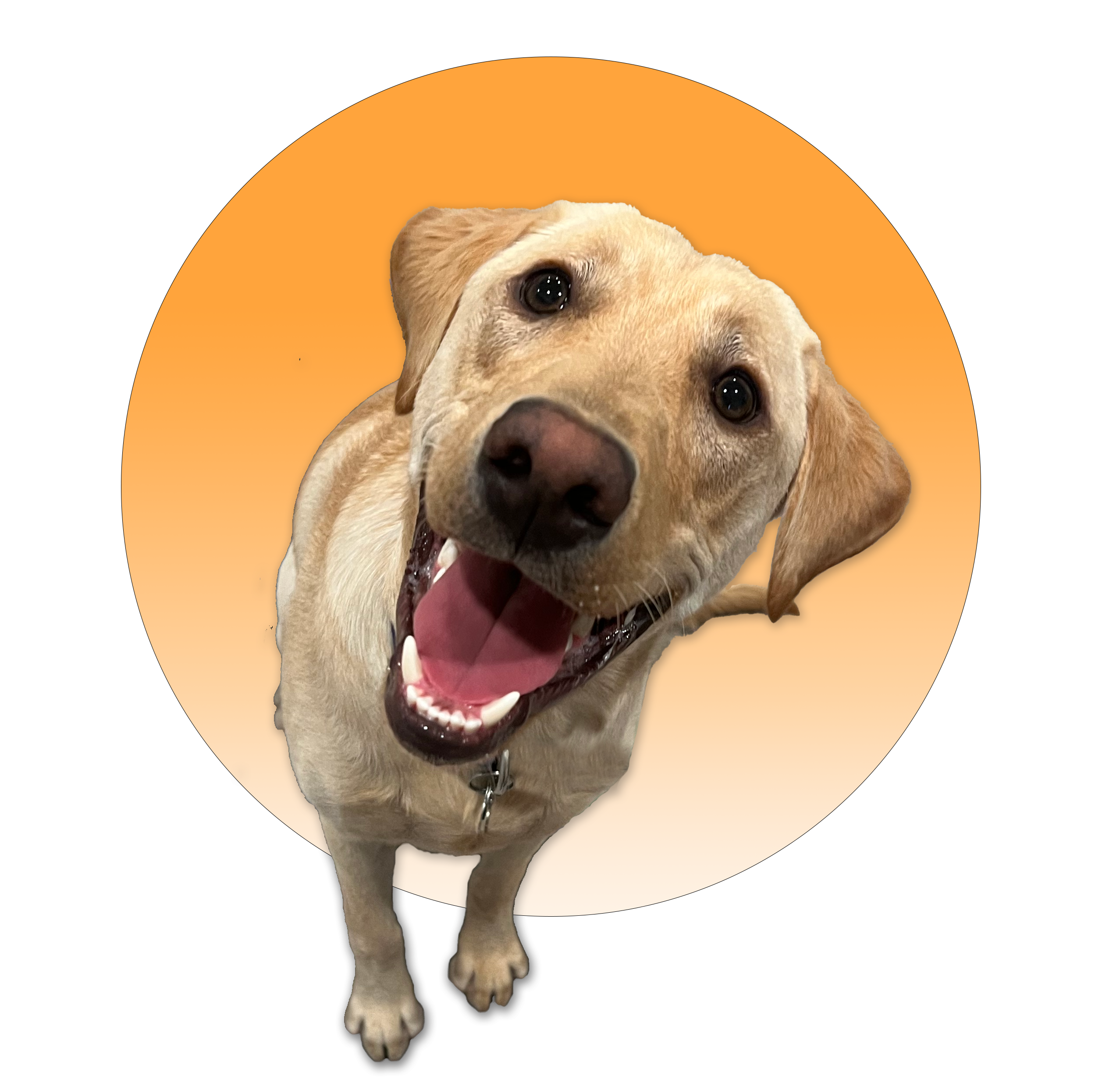Picture this: You’re a work-from-home professional who has been called back to the daily office grind. You fetch your keys, give a goodbye pat to your dog, close the door and drive away, only to get a call from your neighbor that your pup is howling forlornly. When you return, your dog is panting and upset. The leg of a chair is chewed to splinters, couch cushions are scattered everywhere, and your normally housebroken dog has had an accident on the kitchen floor. Over the next week, you continue to arrive home to a distressed dog and worried neighbors, and you realize your pup is more than just temporarily lonely. They’re likely struggling with separation anxiety.
Here’s reassuring news if your dog is exhibiting signs of separation anxiety. In addition to traditional ways of addressing canine anxiety, there are new, interactive home pet tech products that may be able to help! Virtual play, training sessions, and automated treat-dispensers can provide the comfort and stimulation your dog craves when you’re not around. Pupstation by Porter Labs integrates these features into a play and training suite, engaging your pup even when you’re away, easing the stress of separation.
First let’s look at what separation anxiety is – and isn’t – and then see how interactive pet tech can help.
Understanding Separation Anxiety in Dogs
Canine separation anxiety is a complex stress response that can occur when a dog is kept apart from a person (or animal!) they are deeply bonded with. This feeling of intense anxiety and panic affects up to one out of every four to six dogs – and maybe even more dogs whose stress is never noted by their guardians.
Numerous factors can contribute to the development of separation anxiety:
- Early life experiences – Dogs that experienced abandonment, neglect, or a lack of socialization as puppies may be more prone to separation anxiety.
- Change in routine – Sudden changes in daily routine, like moving to a new home or a family member leaving, can trigger anxiety.
- Over attachment – Dogs who are excessively attached to their owners or another pet – or whose owners are excessively attached to them, can become anxious when that person or animal is no longer present.
- Lack of exercise and mental stimulation – Dogs who are not adequately exercised or mentally engaged may become anxious when left alone.
- Past traumatic experiences – Dogs who experienced traumatic events while alone, like thunderstorms or burglaries, may develop separation anxiety.
Signs of Separation Anxiety in Dogs
Common signs of separation anxiety include:
- Destructive behavior, chewing at furniture, scratching or digging at floors or carpet when left alone
- Trying to escape the house
- Excessive barking or howling
- Not eating when you are away
- Urinating or defecating indoors, even if housetrained
- Pacing, restlessness, drooling, and excessive panting
- Injuries caused by their destructive activities, like broken claws and teeth
- Ongoing anxiety can lead to additional physical health issues, like diarrhea, vomiting, hair loss, and more
- You may notice behavioral changes when you are home, too, like distress when you prepare to leave your home, or clinginess when you return
Because signs of separation anxiety commonly occur when you are away from home, you may not even realize your dog is suffering. Some dog owners only become aware of their pet’s distress when they invest in a pet monitoring camera as a fun way to check in on their dog – and discover the dog they thought was happily napping the day away is actually a stressed mess.
Rule Out Other Health or Behavior Issues
Because separation anxiety in dogs is such a complex issue that will involve specific changes in you and your dog’s lifestyle, you’ll want to be certain that the behaviors you are seeing in your pup aren’t actually due to a different problem.
Undiagnosed health issues – Dogs can’t use words to tell us they are feeling sick, and unwanted behaviors could be due to a health issue rather than anxiety. House-soiling could be a sign of a urinary tract infection, hair loss and destructive chewing could be triggered by itchy skin and other health conditions, etc. Your senior dog could have increasing dementia due to age-related cognitive dysfunction. Your first step when your dog begins displaying a change of behavior should be to set up an appointment with your veterinarian.
Boredom and other behavior issues – Dogs may destroy property simply because they are bored and have nothing to do, not because they are anxious. A barking dog could be triggered by people and pets passing by their front window throughout the day, versus severe loneliness. These behaviors can be modified by providing environmental enrichment through options like doggy daycare, a visiting pet-sitter or neighbor, or fun AI-enhanced play or training activities scheduled with PupStation, to make their day more interesting.
Treating Canine Separation Anxiety
Don’t expect a one-shot fix to deep anxiety – but also don’t worry that any of your efforts will be wasted. The steps that you might choose to take to help a dog feel less anxious are also activities that are life-enriching for both your dog and yourself. We aren’t going to pretend to provide all the anxiety-busting answers here, but we’ll cover the basics and also introduce you to how the pet tech you already own, and PupStation, can help.
- Exercise
Exercise is a great stress reliever. A long walk or enthusiastic game of fetch in the yard before you leave, plus hikes and fun after work and on weekends, provides both a mental and physical workout that helps your dog relax and rest. If your dog likes to toss or chase toys, be sure their favorites are out where they can find them, not hidden under the couch. You can also schedule interactive training sessions with PupStation at regular times throughout the day, keeping your dog’s brain and body busy!
- Counterconditioning
Counterconditioning associates the negative experience of ‘being alone’ with positive experiences, like delicious food. Among other options, the ASPCA suggests that before leaving your dog, offer them a puzzle toy filled with tasty treats, like a KONG with cream cheese or peanut butter. Remove these toys when you return home to keep them special. Using edible treats best suits mild cases, as highly anxious dogs may not even want to eat while they are alone.
One of the hurdles of counterconditioning is it can be difficult to infuse your dog’s day with enjoyment if you aren’t there to refresh treats or provide some fun and affection. After all, a frozen Kong full of peanut butter will be emptied within a few hours.
That’s where interactive pet tech is a game-changer. For example, PupStation allows you to set up games and training sessions that adjust as your dog learns, providing them with engaging activities even when you can’t be at home.
- Desensitization as part of a comprehensive anxiety management program
For moderate to severe separation anxiety, a comprehensive desensitization and counterconditioning program is essential. Desensitization involves gradually acclimating the dog to being alone by starting with short, anxiety-free separations of increasing duration over weeks. If your dog shows signs of anxiety when you grab your car keys from the wall hook, try picking up your keys and putting them back in place when you aren’t planning to leave, so your dog gradually becomes less likely to associate the jingle of keys with your long absence.
In moderate to severe cases of separation anxiety, desensitization and counterconditioning are best guided by a trained professional to avoid fear-related setbacks. Look for a Certified Applied Animal Behaviorist (CAAB or ACAAB), a board-certified veterinary behaviorist (Dip ACVB), or a Certified Professional Dog Trainer (CPDT) with expertise in desensitization and counterconditioning. Your personal veterinarian can probably connect you with an expert who can help.
- Medication may help
Medication, under the direction of your veterinarian, may help dogs with mild to severe separation anxiety. Anti-anxiety meds help dogs tolerate isolation and can expedite your dog’s progress as you make other environmental changes toward behavior modification. Your veterinarian or one of the professionals listed above can guide you.
- Limit the time your dog spends alone
If possible, break up the stretches of time your anxious dog is left alone. If you can, consider stopping home for lunch and fitting in a few half-days working from home. If your dog welcomes strangers, you can also enlist the help of a neighbor, dog sitter, or dog walker. However, if visitors cause additional anxiety, or if your dog is a master of escaping out the door or slipping their collar, interactive pet tech could be a safer alternative. You can schedule virtual training sessions throughout the day with PupStation, so they can expect moments of fun and positive rewards.
- Does a crate help dogs with separation anxiety?
Perhaps you’re considering a crate or safe room to reduce damage caused by separation anxiety. This could be a smart move to experiment with short absences if your dog sees their crate as a ‘happy place.’ But it could also cause additional confinement anxiety and injuries if they don’t. Take it slow to find out. Make the crate or safe room a comfy retreat with toys and treats. Start early with puppies and introduce the crate or safe room gradually with both puppies and adult dogs, while you are still at home to see how they react. You don’t want confinement to backfire by making your pup more anxious.
Pet Tech as Positive Counterconditioning: How PupStation Can Help
Let’s look more closely at how PupStation can fit into a behavior modification program for an anxious dog! It’s an innovative play and training system designed to improve the mental and emotional well-being of dogs when their owners are busy or away from home. Porter Lab’s founder, Karthik Arumugham, designed PupStation to help keep his own dog Porter happy and engaged throughout the day. Here’s how it can help address separation anxiety:
- Interactive Play: PupStation offers interactive games and activities that engage your dog’s mind and provide mental stimulation. This can help distract your dog from their anxiety and reduce destructive behaviors.
- Real-Time Monitoring: PupStation provides real-time monitoring so you can easy your mind by checking your dog’s activity remotely.
- Automatic Treat Dispensing: PupStation dispenses treats when triggered by specific actions, which is a rewarding game for your dog, distracting them from being alone.
- Training and Positive Reinforcement: With the system’s ability to reward positive behavior, you can reinforce good habits and reduce anxiety-related issues.
- Consistency through Customization – Tailoring PupStation’s activities to your dog’s day ensures their need for routine is consistently addressed. They won’t feel abandoned once they know they can count on PupStation’s lessons and games.
Don’t let Separation Anxiety Hurt Your Bond with Your Dog
Don’t ignore the signs of separation anxiety, even if you are personally willing to tolerate some of your dog’s anxious behaviors. It can take an unfortunate toll on you, your dog, your household, and community.
- You can feel frustration and guilt if you aren’t able to alleviate your dog’s daily stress. You may blame your dog’s unhappiness on yourself.
- The fear and anxiety can cause a strain in the bond between you and your dog, leading to a less joyful relationship.
- Dogs may develop trust issues if they feel your presence is unreliable, or if you react negatively when you arrive home to damage or accidents.
- Continued anxiety can significantly reduce a dog’s health and quality of life, as their behavior limits their freedom and well-being, and ongoing internal stress can cause external injuries or health problems.
- Ongoing damage, noise complaints, or concern for your dog’s wellbeing can cause strife between you and your housemates, partner, spouse, or neighbors.
- Separation anxiety is even reported as a reason some dogs are surrendered to a shelter by their owners.
Humans Experience Pet-Related Separation Anxiety, Too!
Guess what? You’re not alone if leaving your beloved dog behind gives you a case of the worries. In a 2022 survey, a whopping 40% of pet owners admitted feeling the same.
Enter PupStation. It not only engages your dog throughout the day, helping them funnel away anxiety into fun and learning, it can provide you with personal peace of mind. When you schedule automatic play and training sessions for your dog via PupStation, you can be confident your dog is having a blast while you’re away.
Be the First to Know When PupStation Launches!
Dealing with your pup’s separation anxiety can be a challenging puzzle. Thankfully, PupStation, our innovative AI-enhanced solution, brings fun and learning to dogs, and relief to absent pet owners. With mental stimulation, interactive play, and real-time monitoring, it’s the unexpected superhero your anxious dog needs. PupStation can help alleviate your dog’s anxiety and provide peace of mind for both of you.
Enriching your home with pet tech isn’t just about tackling unwanted dog behaviors: it’s all about rebuilding or strengthening that awesome connection with the dog you love – and who loves you, too! Technology can’t replace the love and care of a human buddy. However, it can be a game-changer for your dog’s happiness when you are busy or away from home. To learn more about the world of PupStation, visit the Porter Labs website.



